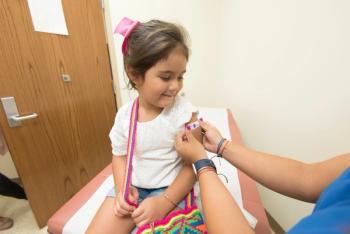An outbreak of scabies at a Chicago daycare and preschool has affected at least two dozen people, as school officials hope to avoid temporarily closing the school to prevent the spread of the parasite.
The mites responsible for scabies create an itchy skin infestation by burrowing into the top layer of skin, where they lay their eggs. People with scabies often have a telltale rash marked by red, raised bumps that typically appear along the wrists, elbow, armpits, between the fingers, nipples, penis, waist, and buttocks. In infants and young children, the head, face, neck, palms, and soles of the feet may also be affected. Once an individual is exposed to the parasite they can spread scabies. Symptoms may take 4 to 6 weeks to appear in someone who has never before been infected with scabies. For those who have had previous scabies infections, symptoms can appear in as little as 1 to 4 days. Scabies mites are highly contagious and spread easily though close and frequent contact and in crowded conditions, leaving childcare facilities particularly prone to such outbreaks.
The recent scabies outbreak in Chicago has affected children and teachers at the Chicago Commons Paulo Friere Center on the city’s South Side. The preschool and daycare center has approximately 150 children ranging in age from 7 months to 5 years. So far, a total of 24 scabies cases have been confirmed at the center, with at least 14 children and 10 teachers affected. School officials have been tracking the outbreak since learning of it on May 18, and have informed parents and guardians about the outbreak, and have also made families aware of symptoms and treatment options before additional children were diagnosed with the condition on May 30. While health officials have not urged the school to close, the center’s facilities have undergone thorough cleaning and any students with confirmed scabies infestations are being kept home until they are appropriately treated.
While scabies is a highly treatable condition, the World Health Organization notes that in resource-poor communities without access to treatment, affected individuals are more prone to complications, such as bacterial skin infections, and, in some cases, even permanent kidney damage. The Illinois Department of Public Health advises that scabies be treated with prescription scabicide medication, a topical lotion or cream applied to all areas of the body. Scabies mites can only survive for up to 3 days away from human skin, so any bedding, clothing, or towels used within 72 hours before beginning treatment must be washed in hot water and dried on a hot setting in the dryer, or sealed in a plastic bag for 3 days.
According to the Centers for Disease Control and Prevention (CDC), rash and itching from scabies can continue for up to a month after successful treatment of the skin infestation, though symptoms may also persist due to treatment failure from improper scabicide application, treatment failure from resistance to medication, a reinfestation of mites in the skin, an incorrect diagnosis, or an allergic skin rash. The CDC recommends that anyone whose scabies symptoms continue for 2 to 4 weeks after treatment see their doctor.


















































































































































































































































































